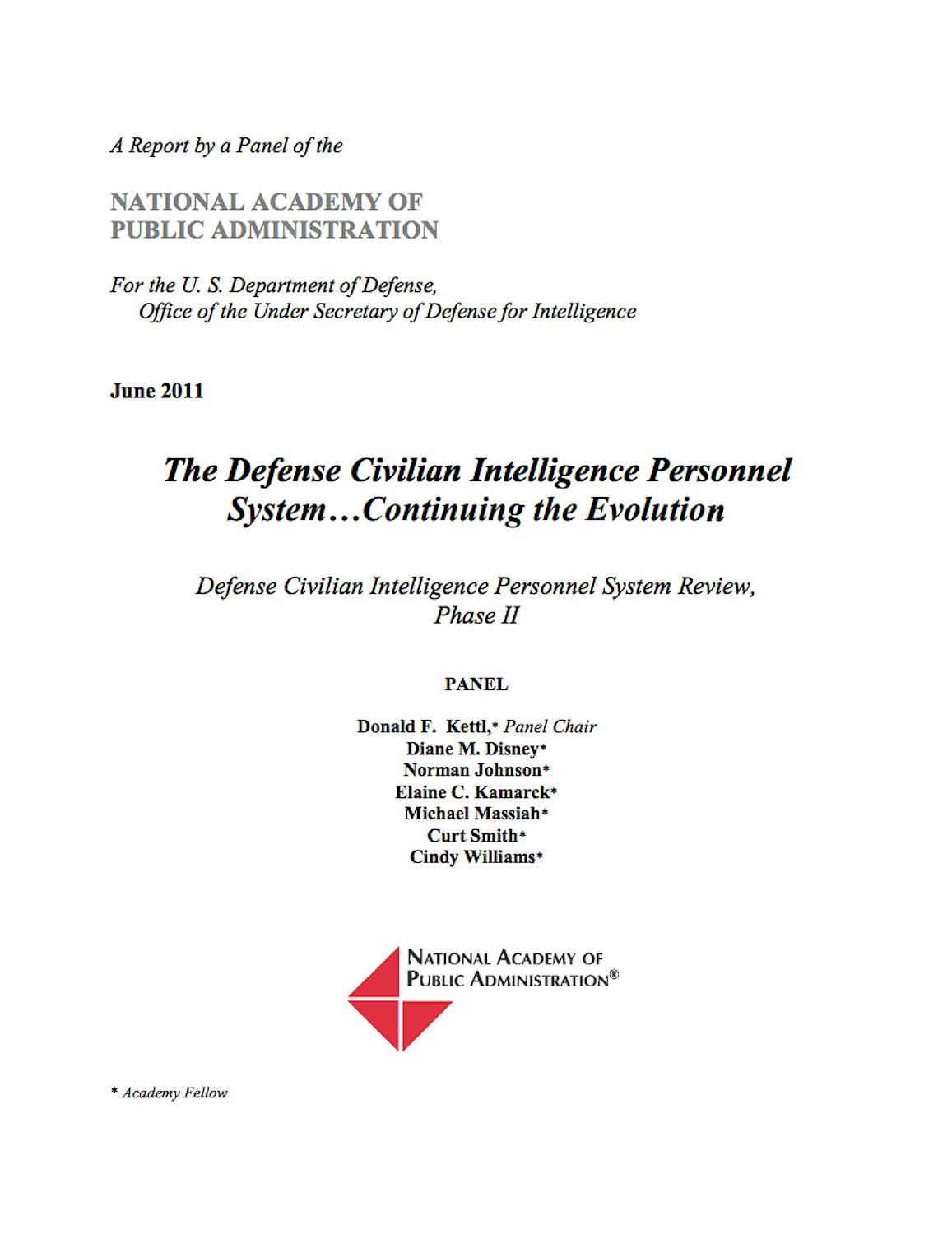
The Defense Civilian Intelligence Personnel System…Continuing the Evolution
In Phase 2 of the review of the Defense Civilian Intelligence Personnel System (DCIPS), the Office of the Under Secretary of Defense for Intelligence engaged the Academy to provide independent verification and validation, as well as ongoing advice and guidance, for continuing the evolution of DCIPS. Following the issuance of the Academy Panel’s Phase I report, the Secretary of Defense (SECDEF) decided to limit the full scope of the pay-for-performance elements of the Defense Civilian Intelligence Personnel System (DCIPS) to the National Geospatial Intelligence Agency. This decision created a need for revisions in the fundamental design of DCIPS and ushered in a new set of requirements to transition most of the DCIPS workforce from pay bands to grades. In light of the SECDEF decision, the Human Capital Management Office (HCMO) of the Under Secretary of Defense for Intelligence (OUSD(I)) engaged the Academy to perform independent verification and validation of the continuing evolution of DCIPS. The SECDEF decision outlined several areas where OUSD(I) would need to focus its efforts in reshaping DCIPS to address the Academy Panel’s Phase I recommendations.
Click the button below to view the View Report.
View ReportClick the button below to view the Supplemental Materials.
Supplemental MaterialsKey Findings
These focus areas, along with other priorities identified by HCMO, provided the framework for the Academy Panel’s Phase II review. Specifically, the Phase II Panel reviewed OUSD(I)’s efforts in the following areas:
- Change Management, Communications, and Training;
- DCIPS Policies;
- DCIPS Evaluation and Performance Measures;
- DCIPS Performance Management System;
- Equity Analysis; and
- Band-Like Compensation Structure.
OUSD(I)’s original intent was for the Academy to validate DCIPS as a comprehensive, mission-supporting HR system. However, as the Phase II review progressed, the Panel concluded that “validation” of DCIPS would not be possible since key foundational policies central to the evolution of the system were, and still are, under development. Therefore, the Panel focused on reviewing OUSD(I)’s progress in working with the Defense Intelligence Components to reshape DCIPS, as well as identifying the gaps and remaining challenges that needed to be addressed to strengthen DCIPS’ design and further align it with the objectives originally set out for the system.
Recommendations
The Panel found that OUSD(I)’s HCMO was making significant progress in reshaping DCIPS to align the system with the SECDEF decision and other critical criteria. However, the Panel identified gaps in each of the focus areas of the review. To help move DCIPS forward and close the gaps in aligning DCIPS’ plans, policies, and other materials with the Defense intelligence mission, the Panel offered several overarching recommendations to help DCIPS meet its intended objectives, as well as several recommendations in each of the focus areas of the review. Of chief importance, the Panel recommended that OUSD(I) make it a priority to develop and communicate a clear, compelling case for DCIPS based on the central goal of encouraging greater collaboration and information sharing within the Defense Intelligence Enterprise. The Panel also recommended that OUSD(I) and the Defense Intelligence Components strive to adhere to established timelines for the transition to a graded environment so that once the transition has been completed, OUSD(I) can focus its full attention on the longer-term policy changes that are necessary to align DCIPS with the missions, goals, and objectives of the Defense Intelligence Components.
